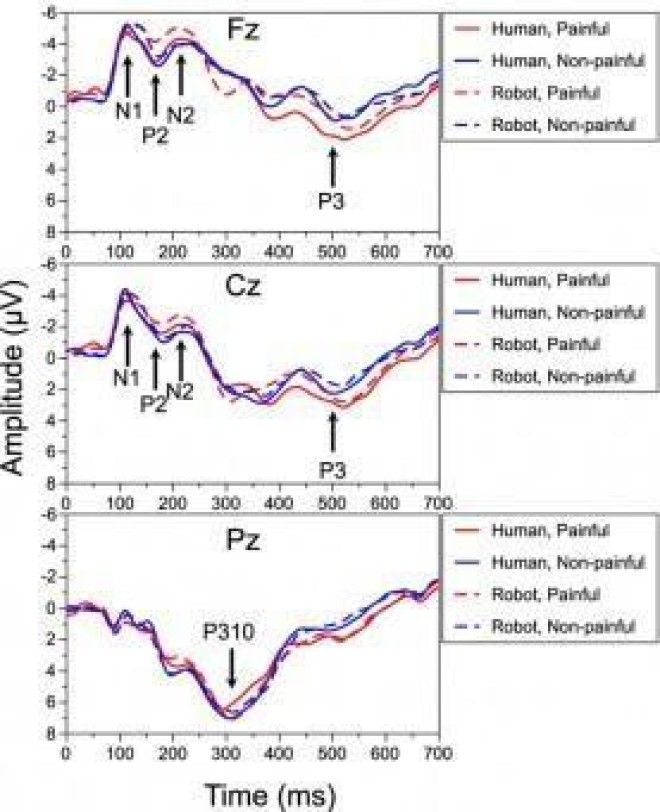
A research group, headed by Yutaka Suzuki of the Department of Computer Science and Engineering at Toyohashi University of Technology, published a very interesting report last week in the journal, Scientific Reports – The study focused on how humans reacted to images of violence done to a robot, compared to their reactions over the same violence done to a human. The results might just surprise you.

The study provided, for the first time, physiological evidence of human predilection toward empathy for robots experiencing pain – Read that sentence a couple times, and the number and depth of thought lines and questions it raises becomes quite interesting, indeed.
Study subjects were connected to active electroencephalography, (EEG), while being shown images of either a human or a robot hand being subjected to painful and non-painful stimuli – like a human or robot hand being cut with scissors, then an image of the same robotic or human hand simply resting on a piece of paper that is being cut by the scissors. The researchers noted that, “To our knowledge, there has been no study on empathy for robot pain using EEG,” which makes this study not only unique, but truly fascinating.

The general upshot was that human observers consistently registered concern, empathy if you will, whether or not the hand being harmed was human or robot. While the text of the report is typically dense, the researchers stated clearly that, “These results suggest that we empathize with humanoid robots in late top-down processing similarly to human others. However, the beginning of the top-down process of empathy is weaker for robots than for humans.” In other words, while there are some distinct differences in the nature and level of empathy displayed for humans and robots, there is clearly concern for the robot’s well being.
Advertising

Such a finding is fascinating in light of the advancing profusion of robotic interaction in everyday human life. Furthermore, it raises interesting follow up questions – How much of that empathetic reaction has been attuned by popular media, such as online gaming, movies, and television?
The researchers reference other work that informed their own, including a study, “that reported significantly higher right limbic system activities in subjects observing violent human-human interactions compared to violent human-robot interactions. Their results suggest that we show similar neural activities for empathy directed toward humans and robots, though there are some differences in empathetic neural response between empathy for humans and robots.” While that might seem to be a natural reaction to us humans, it also begs the question, why?
Are there differences in how we perceive and react to pain in beings other than humans, like animals? Just what do those “common neural responses” that implied empathetic human response to robot pain imply? How much of what was observed is predicated upon, or at the very least, impacted by the methodology of the study itself? Again, the most fascinating thing about the study is all the distinctly twenty first century questions and considerations it seems to generate.

